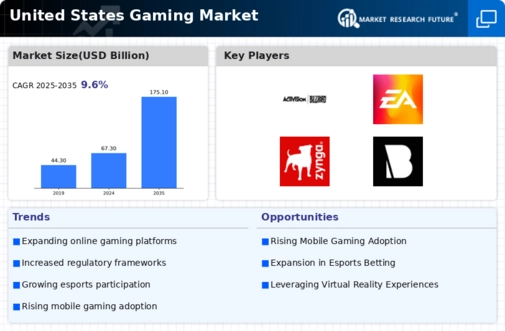Significant rise of cloud gaming is driving market growth
A significant trend in the gaming industry, cloud gaming enables players to transmit games directly to their devices, eliminating the need for expensive hardware or physical game copies. This trend is reshaping the gaming landscape by providing developers and players with increased accessibility, convenience, and scalability, driving the market CAGR. Cloud gaming functions by allocating the necessary computational power to remote servers, which subsequently transmit the video and audio streams to the player's device via the internet. As the processing power is concentrated on the server, sophisticated gaming consoles or personal computers are rendered unnecessary.
As worldwide internet infrastructure continues to advance, cloud gaming becomes progressively more accessible to a wider demographic.
An important factor contributing to the proliferation of cloud gaming is the increasing desire for gamers to have accessibility and flexibility. Players can access their preferred games via cloud gaming services on an extensive array of devices, such as smart TVs, smartphones, tablets, and laptops. This versatility enables players to experience their preferred games from any location or platform without being restricted to a particular system or area. Cross-platform gaming, alternatively referred to as cross-play or cross-platform play, is an emerging phenomenon within the gaming sector that facilitates seamless collaboration among participants utilizing disparate gaming platforms and devices.
This phenomenon is propelled by an aspiration for enhanced interconnectivity, diversity, and player autonomy, thereby dismantling partitions among gaming communities and cultivating a more cohesive gaming environment.
Throughout history, gaming ecosystems have exhibited a fragmented structure, restricting players from interacting exclusively on a single platform. As an illustration, Xbox users were limited to competing against other Xbox users, whereas PlayStation users were solely permitted to utilize their platform. The objective of cross-platform gaming is to surmount these constraints by facilitating collaboration and interaction among participants of various platforms within identical online multiplayer games. A fundamental advantage of cross-platform gaming is its capacity to unite participants irrespective of the devices they possess.
Cross-platform functionality eliminates the barriers that once divided gaming communities by enabling players to connect with peers and compete against players from around the world, regardless of the platform they use (console, personal computer, mobile device). Thus, driving the United States gaming market revenue.














